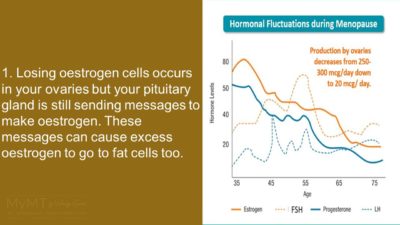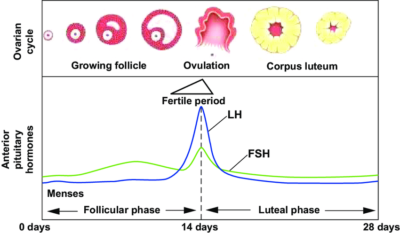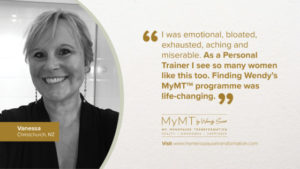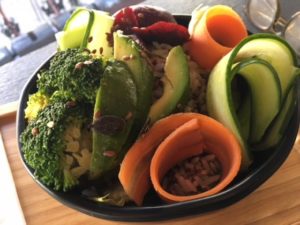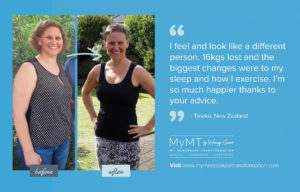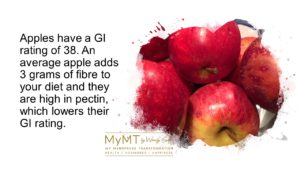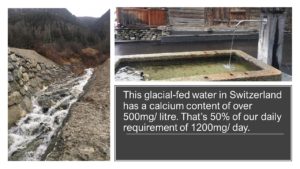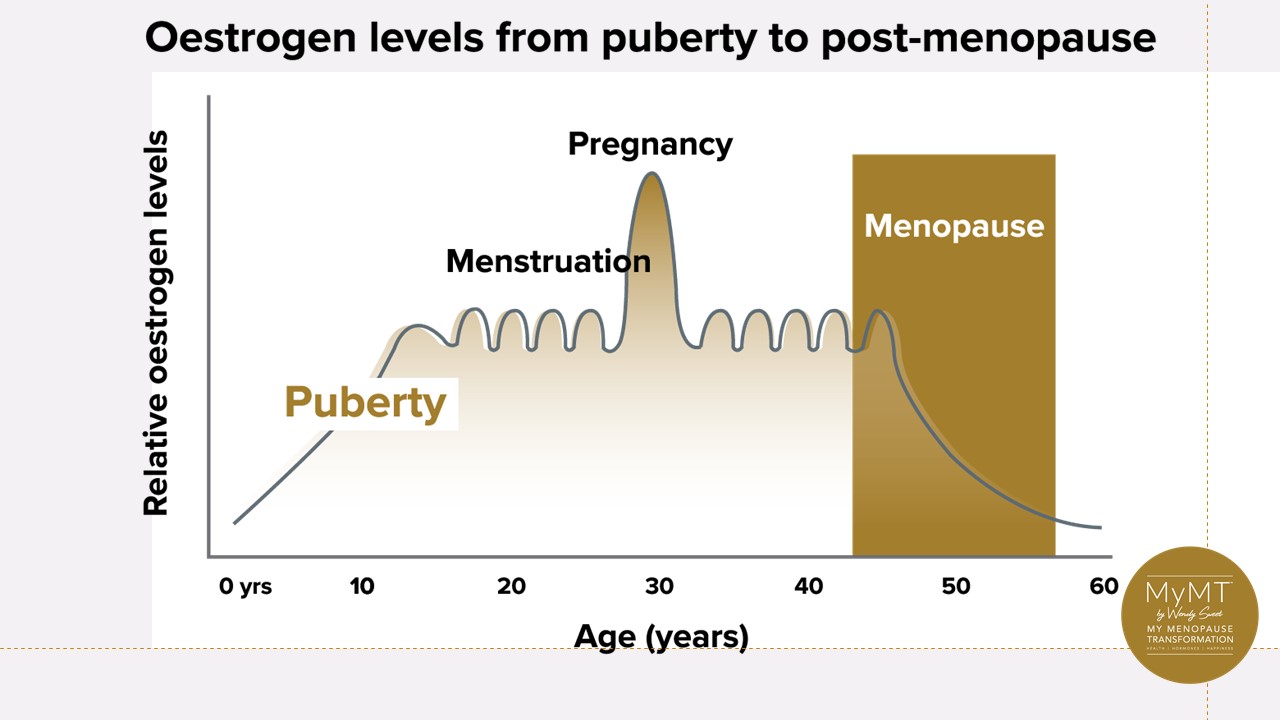I remember 1987. In my late 20’s, my days were full of training for the emerging triathlon scene which was part of the changing physical landscape for women, along with the emergence of Jazzercise in the fitness industry. Working as a former nurse, I can’t believe all the training I did back then on top of my shifts nursing – I had so much energy back then! 1987 was the year that I completed the New Zealand Ironman competition. I took a few days off work and as you did back then, put my very basic 12-speed bike, running shoes and togs in my little car and drove nearly the length of New Zealand from Dunedin to Auckland. I couldn’t afford the air-fare.
Back in those days, I had no idea how to eat or train for my hormonal cycle – it wasn’t talked about. In fact, I didn’t know much about my menstrual cycle at all. Nobody talked about it. There was no sport science, no sports nutrition and definitely no discussion about the type of training and nutrition to better suit the ebb and flow of our menstrual cycle. In fact this research about women’s hormonal health didn’t exist until a few years ago. But it’s great that it has emerged, because as we are the first generation of women to enter menopause in the context of being so active, we need to now apply this research to this age and stage of life.
Updating myself on the hormonal health research reminded me about those of you in peri-menopause and how we can use this knowledge to better manage this stage of our life. After-all, peri-menopause (the time leading towards menopause when your periods cease) is as different from post-menopause as is chalk from cheese. Too often women are thrown into the same ‘one-size-fits-all’ basket at this life-stage. But they shouldn’t be, because during peri-menopause, food and exercise needs differ as oestrogen and progesterone production is beginning to decline. This lowering of oestrogen affects other organs and tissues around the body too.
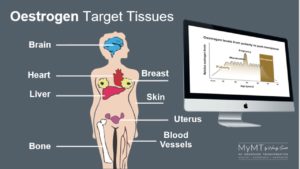 What is peri-menopause?
What is peri-menopause?
Perimenopause refers to the years leading up to actual menopause which is the point in time when permanent cessation of your menstruation occurs. Globally, the average age that you enter menopause is around 51-52 years old, unless of course, you have gone into surgical menopause after a hysterectomy or after other medical interventions. Natural peri-menopause begins around your mid-40’s, but as you learn in my
online Masterclass on Menopause, this can change according to when you began puberty or due to the age you were when you had children.
Peri-menopause is usually the time when symptoms such as hot flushes/ flashes, dry or less elastic skin, weight gain, irregular bleeding, sore joints, anxiety, dizziness and/or feelings of depression and lethargy begin. It’s tough for many women and I had many of these symptoms too – which I found confusing and frustrating. At the time, what I didn’t realise, was that my body was ageing and in my mid-late 40’s, I wasn’t actually in menopause, but peri-menopause. Menopause is the stage that periods stop but the years prior to that (peri-menopause) is when our hormones are fluctuating, not only within the ovaries but within our bloodstream as well.
When our periods have stopped for a year or more, then we enter our post-menopause years, which is the time when oestrogen, progesterone and our pituitary hormone production has reached it’s lowest levels. Our reproductive years are over. But symptoms can persist in women into their post-menopause years, when they aren’t allowing their body to adapt to this life-stage. Many fail to understand that it’s not just our reproductive hormones that are the ‘problem’ – it’s the effect that our menopause transition has on other hormones around the body.
“Regardless of popular belief, the decrease of oestrogen hormones is not the sole cause of menstrual cessation; rather, many hormones fluctuate to cause this reproductive transition or “climacteric.” (Dillaway, 2004).
Some hormone levels increase while others decrease and fluctuations can occur from eight to ten years prior to cessation of periods to several years
afterwards. What women experience is not just peri-menopause, but a complex reproductive transition that can span a number of years. Hence, how we look after ourselves during and after this transition matters to our health as we age.
If you are just entering menopause, then you are in ‘peri-menopause’. This happens normally any time from mid-life, which the World Health Organisation [WHO] defines as ‘halfway through the average life-expectancy of the population’. For most Western countries, women’s life expectancy is around 84-86 years of age, so mid-point is around our mid-40’s.
That’s why for those of you who are still menstruating and in peri-menopause, I thought you might like to have a little focus on eating and exercising for our menstrual cycle in this week’s newsletter. Thank you for joining me.
Our female physiology is complex … and it’s riddled with fluctuations in sex hormones from one month to the next as we move through our menstrual cycle. Even as we go into peri-menopause our pituitary hormones are still trying to get the ovaries to produce oestrogen, however, there is a dwindling pool of follicles (clusters of cells that produce ova and hormones) due to our ovarian ageing. Some of you will have lighter periods, but some of you may have heavier periods. And it’s all to do with how quickly we lose oestrogen and progesterone as our ovaries (if you still have them) go into decline.
[Photo Credit: ResearchGate]
Your menstrual cycle is typically divided into 3 phases:
1. Your period is called ‘menses’ and occurs from Days 1-5 of your cycle.
2. The follicular or regenerative phase follows and thickening of your endometrial lining in your uterus occurs. This is mainly achieved under the direction of your pituitary reproductive hormones, FSH and LH (follicle-stimulating hormone and luteinizing hormone).
3. The last phase of the monthly cycle before our period starts again is the luteal or progestational phase. The corpus luteum is readying itself to support a foetus and the endometrium is thickening. Some of you with endometriosis may experience more bloating and pain at this time of the month, and this is when some of you put on fluid weight and experience cravings for sugar and simple carbs, such as bread and baked products. The reason for these cravings, is that this phase is dominated by progesterone so oestrogen is lower.
The luteal phase of your monthly cycle, when progesterone is in control, is when you feel more emotional, bloated, lethargic and yes, you might crave certain sweet, simple foods, especially if you are exercising a lot and not managing your post-exercise blood sugar levels. Even when you are transitioning through peri-menopause, you can still experience these mood swings, bloating and cravings too as your pituitary hormones continue to manage the monthly hormonal messages.
How do we eat for our fluctuating hormones in peri-menopause?
Fortunately there is a lot more research around this area these days, and if you have a teenage daughter involved in lots of sports then plug her into the work of Exercise physiologist and nutrition scientist, Dr Stacey Sims from the University of Waikato’s Dept of Health, Sport & Human Performance (where my doctorate is from too). Stacey researches female athletes and hormonal cycles. I’ve been following her research for a number of years, but in the context of the ‘other-end’ of our life cycle – peri-menopause. So, let me share with you these main points from a nutritional perspective (and my next article HERE) has your exercise advice specific to peri-menopause).
• Phase 1: (Your period) – Both oestrogen and progesterone are low in this phase, but if your periods are heavy, then eat foods high in folate, Vitamin B12, B6 and iron. Whilst we need lots of deep-green vegies in this phase, some of you might like to have more red meat in this phase, unless you are vegetarian. Whilst I don’t have a lot of meat-meals in the MyMT™
programmes, especially for women in post-menopause when they aren’t menstruating any more, for some thinner/ leaner women or those of you who are exercising, up to two meat meals a week is warranted in this phase (NZHF, 2020). If you aren’t a meat-eater, then get healthy Omega 3 fats into you via avocado, salmon, olive oil & nuts. Ensure you also stay well hydrated.
• Phase 2: The follicular phase towards ovulation is when oestrogen dominates the hormonal environment. You may feel puffy, heavy and put on weight. When oestrogen dominates then eat less eggs, dairy products, chicken and soy-based foods as these are high in natural oestrogen compounds. I talk a lot about these foods in the MyMT™ Transform Me programme because as we move through menopause and we are putting on weight, then our fat cells store this additional oestrogen. When you eat a lot of high-oestrogen foods, your ageing liver is also working harder to clear the excess oestrogen, saturated fats and cholesterol. Add more salads and lighter plant-based meals that don’t make you feel bloated.
• Phase 3: The luteal phase is when progesterone dominates your hormonal environment. For many of you, this can be the craziest phase and it’s why millions of women both young and older, experience symptoms related to PMS (pre-menstrual syndrome), which typically includes mood swings and low blood sugar. This is why an often-reported symptom of this phase are food cravings, especially sugar cravings.
For women in peri-menopause however, when hormones all around the body are fluctuating, this phase might also include feelings of depression, anxiety, melancholy or increasing hot flushes. In this phase, balancing up your oestrogen and progesterone levels are important. So, try adding more plant-based protein to your diet, such as yams, soy-based products such as endame beans. If you aren’t overweight, then you might like to add small amounts of protein from low-fat milk or eggs. The goal is to balance up higher amounts of progesterone with oestrogen-rich foods. (If you are overweight or obese, then please be careful about having too many oestrogen-rich foods in total, because your fat cells love storing excess oestrogen – I have an article and video for you about this HERE).
Adding zinc-rich foods such as fish and salmon is also well documented in your mid-luteal phase (and important for your immune health whilst the world is in chaos). When progesterone is high, this breaks down muscle more readily, so if you are an exerciser, then include healthy vegetable carbohydrates (sweet potato or brown rice) because carbohydrates work with protein to help maintain muscle. Research supports that this phase is when you are most likely to crave sugar, so get healthy vegie snacks ready instead of unhealthy sugary drinks or sweets. Apples are a great snack for you as are carrot sticks and celery dipped in hummus.
• Perhaps the most important factor in the luteal phase (before your period) is to focus on hydration. Plasma is the watery part of your blood. When hormones are high in the luteal phase, plasma volume drops by approximately 8%, meaning that less is available for blood circulation, sweating and maintaining your blood pressure. When I’ve visited Switzerland over the past few years, I love the water that flows in the troughs which is glacial-fed and high in calcium and magnesium. Both these minerals are crucial to help reduce anxiety and improve our heart and bone health, especially as our nervous system, bones and muscle contraction (including cardiac muscle) as we move into and through peri-menopause.
As you move through menopause and into post-menopause, hormone fluctuations as part of your cycle should become less intense, but only when we adapt our lifestyle to better suit these changes. This is why I designed the
12 week MyMT™ programmes for you. When you are ready, I hope you can join me too.
References:
Dillaway, H. (2006). When does menopause occur and how long does it last? Wrestling with age and time-based conceptualizations of reproductive aging. NWSA Journal, 18(1), Spring, 1-31.
Gorczyca, A., Sjaard, L. et al. (2015). Changes in macronutrient, micronutrient, and food group intakes throughout the menstrual cycle in healthy, premenopausal women. Eur. Journal of Nutrition, Published Online 5th June, 2015: Springer.
New Zealand Heart Foundation (October, 2020). Meat and poultry: New guidelines for cardiac health. Wellington: NZHF
Sims, S. (2017). ROAR: How to Match Your Food and Fitness to Your Unique Female Physiology. Amazon Publ.
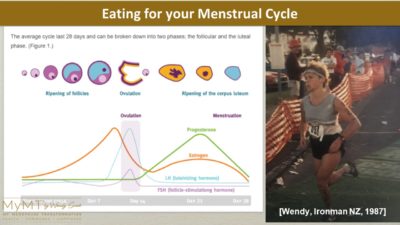
 What is peri-menopause?
What is peri-menopause?